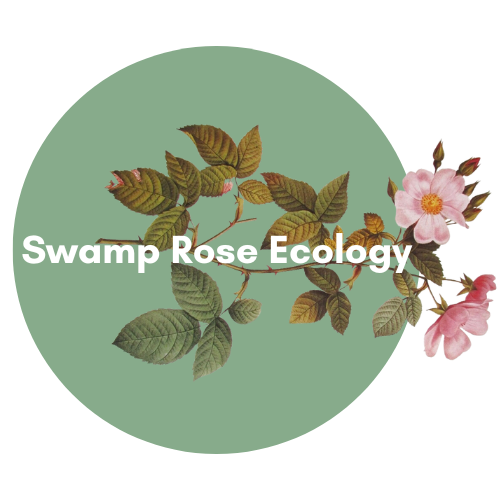
Emission-free Equipment and Habitat Restoration
Habitat restoration activities are essential for managing ecosystems, but they can also contribute significantly to greenhouse gas emissions and impact air quality. Traditional forestry equipment, powered by fossil fuels, releases carbon dioxide, nitrogen oxides, and particulate matter, exacerbating climate change and degrading air quality. A single brushcutter can easily consume 2 gallons of gas/oil mixture per 8 hour work day, chainsaws nearly double that. These emissions are a growing concern as they contribute to climate change, disrupt wildlife habitats, and pose health risks to communities.
Additionally, according to a study published in the journal Forests by Huber et al. (2021), electric chainsaws produced 78.4% less noise than those using fossil fuels. This is a significant reduction in noise pollution not only for the comfort of nearby humans, but also animals (which are well-documented as being negatively impacted by auditory disturbances). Other electric forestry equipment similarly produces less noise than gas-powered counterparts.
At Swamp Rose, we recognize the importance of operating to the highest environmental standards when our planet’s ecosystems are facing unprecedented perils. That's why we've adopted a groundbreaking approach by using equipment that is exclusively electric or manual, significantly reducing our carbon emissions and minimizing our impact on air quality. The only emissions we produce are through our commutes.
Our Zero Emission Equipment
Electric Chainsaws: Our electric chainsaws cut down on emissions without compromising on power, offering a cleaner alternative for tree and shrub management.
Pole Saws: With electric pole saws, we can reach higher branches efficiently and sustainably, ensuring precise trimming with minimal environmental impact.
Brushcutters: Our electric brushcutters allow us to manage undergrowth and invasive species, maintaining healthy habitats without the pollution.
Tillers: While we try to avoid disturbing soil as much as possible, electric tillers are utilized on occasion to unearth some harmful rhizomes such as those from field bindweed (Convolvulis arvensis).
Manual equipment: We use a variety of manual tools such as soil knives, bypass loppers, handsaws, pickaxes, shears, planting spades and more when required for more surgical tasks.
We help clients ranging from individuals and businesses to NGOs and government agencies restore habitats without the use of pesticides or on-site fossil fuel consumption. Our habitat restoration services include:
End-to-end Project Management and Implementation for Natural Resource Management Projects: We have years of experience working with NGOs and government agencies conducting resource management duties such as grant funding acquisition, project planning, GIS mapping, biological surveys, planting, and habitat feature installation.
Native Plant Selection and Installation: Our staff biologists will carefully select a diverse range of native plant species that are well-suited to your specific location and soil conditions. Native plants provide essential food and shelter for local wildlife, attract beneficial pollinators, and require less maintenance compared to non-native species. The Swamp Rose team will design and install ecological features such as pollinator gardens, native grass meadows, and wildlife-friendly habitats. These features create a mosaic of diverse habitats that support different species and provide opportunities for wildlife observation and interaction.
Freshwater mussel-friendly restoration practices: Native mussels, like beavers, are ecosystem engineers. As such, these species are a cornerstone of healthy aquatic habitat, directly benefiting ecosystem components from salmon populations to water quality. At Swamp Rose, we believe that mussels should be taken into account during the design and implementation of any project that may contain mussels. For more information, view our freshwater mussel page.
Soil Testing and Improvement: Healthy soil is the foundation for a thriving habitat. We will assess your soil quality and make necessary amendments to replicate surrounding natural areas as much as possible. By promoting healthy soil, we ensure optimal plant growth and overall ecosystem health.
Water Management: Our team can implement strategies to conserve water as well as manage stormwater and agricultural runoff.
Wildlife Habitat Enhancement: We can incorporate features such as birdhouses, bat boxes, snags, downed branches, canes and various nesting areas to attract and support a wide range of local wildlife. Creating safe havens and suitable breeding grounds for birds, pollinators, and other animals will bring your landscape to life with fascinating and beneficial wildlife interactions.
Educational and Maintenance Support: As part of our services, we provide educational resources and guidance on maintaining your restored habitat. We believe in empowering homeowners with the knowledge and skills to continue nurturing their thriving ecosystem long after our work is complete. We can also offer ongoing maintenance support to ensure the sustained health and beauty of your habitat.



